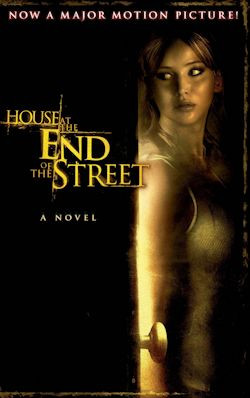Lily Blake’s novel, “The House At The End Of The Street,” emerges from the shadowy corners of a screenplay by David Loucka, itself inspired by a story from Jonathan Mostow. While many cherish the original book over its film adaptation, the journey from screen to page offers a different perspective. In this review, we delve into this young adult horror thriller, exploring its suspenseful narrative and how it translates the cinematic creepiness into a literary experience.
At a concise 190 pages, “The House At The End Of The Street” is a quick read, perfect for an afternoon of suspense. The pacing is brisk, maintaining a sense of unease and anticipation that keeps you subtly hooked. While the premise itself isn’t entirely novel within the horror genre, it’s the twist that attempts to inject originality into the narrative. To reveal too much would spoil the unsettling surprises, but suffice it to say, even seasoned thriller enthusiasts might find a familiar echo in its turns.
However, the book’s origin as a screenplay is palpable. The prose, while functional, lacks a certain literary richness. It’s descriptive enough to paint a basic picture, but it doesn’t fully immerse you in the characters’ emotional landscapes or the atmospheric dread one might expect from a truly gripping horror novel. It feels as though the story is being recounted rather than experienced, a direct translation from visual medium to text.
 The House at the End of the Street book cover
The House at the End of the Street book cover
Despite this, “The House At The End Of The Street” successfully captures attention. The narrative pulls you in from the outset, driven by the need to unravel the unfolding mystery. You might not find yourself on the edge of your seat, but the story maintains a steady level of engagement.
The plot centers on Sarah and her daughter Elissa, whose relationship is strained by the absence of Elissa’s father after a divorce. Seeking a fresh start and hoping to guide Elissa away from perceived missteps, Sarah relocates them from the city to a quiet small town. They find an affordable rental adjacent to a house with a dark past – the site of a double murder committed by a teenage daughter years prior. Adding to the unease, the son of the murdered couple still resides in the infamous house, much to the town’s discomfort.
Elissa’s path crosses with this ostracized son, and against her mother’s reservations, a friendship blossoms. This connection brings him back into the unwelcome glare of public scrutiny, disrupting his self-imposed isolation.
“The House At The End Of The Street” delivers a light, suspenseful experience, reminiscent of classic low-budget horror films. For readers who enjoy thrillers with a YA edge and appreciate suspense over excessive gore, this book provides an entertaining diversion. If you are a fan of movies like “Scream” or “A Nightmare on Elm Street,” but prefer a milder level of horror, this novel might resonate with you. Approach it with moderate expectations, and you’ll likely find it to be a satisfyingly creepy read.
